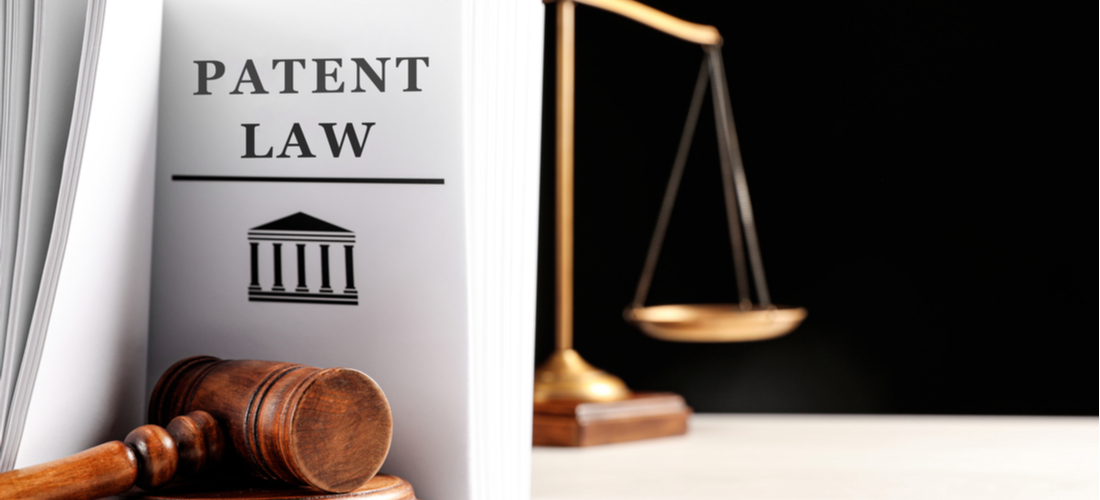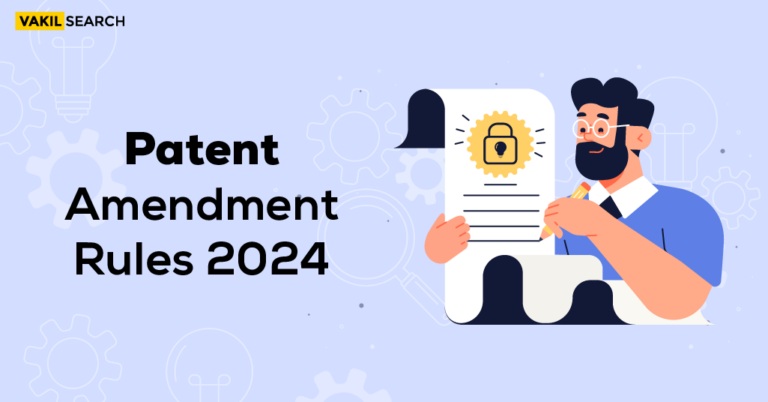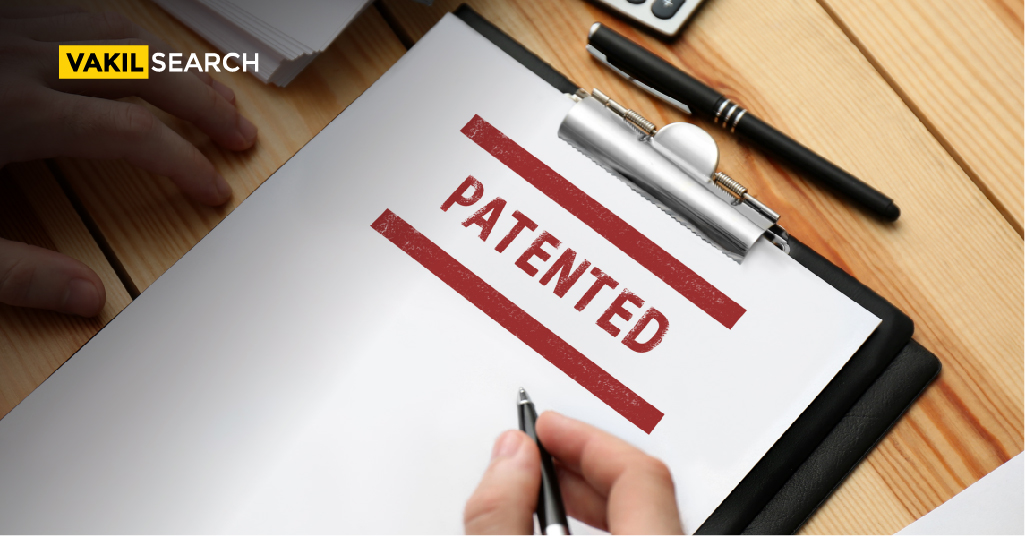This informative article has covered all the critical deets you need should know regarding Patent laws in India. We have also covered patent infringement and some remedies for you to be aware of. Read along to learn more. Patent Laws in India
A patent is a right offered to the originator to prevent other people from using, making, or selling an invention for a certain timeframe. Patents are also attainable for added expansion of their earlier design. The primary goal of endorsing patent legislation is to inspire innovators to donate more to their profession by providing special rights to their ideas.
In modern parlance, patenting is a privilege awarded to an inventor to invent any fresh, useful, non-obvious technique in a machine, a product of manufacture, or substance composition. The term “patent” comes from the Latin verb “patere,” which translates “to lay open, in English. For any innovation to be patentable, it must pass three basic tests:
- Firstly, the creation must be novel, which does not already exist.
- Second, the creation must be non-obvious; it should be a considerable advance over the prior one; a slight modification in technique will not issue the product the right to a patent.
- Third, the innovation must be beneficial in a legitimate manner, which means that it must not be exclusively employed in any unlawful work and must be valuable to the world in an honest way.
An invention is new if it is not known to the public. Anything known to the public domain is not inventive. The patent has a duration of 20 years, which begins on the day of the patent application. As a result, it can only be used in the country where it has been issued. As a result, any legal action for infringement or violation of patent rights may only be brought in that nation.
Each nation must file for a patent to acquire protection in other countries. The PCT (Patent Cooperation Treaty) provides a method for filing an international patent application. A patent may be submitted in many nations using a single application. The PCT is at the discretion of the patent office only after the application is submitted.
A Brief History of Patent
Act VI (1856) was stated to be the earliest stage in India’s patent process. The legislation’s primary goal was to stimulate the respective innovations of new and valuable industries and motivate inventors to divulge their thoughts and make them accessible to the public. Act IX of 1857 abolished the Act since it had been approved without the permission of the British Crown. Act XV of 1859 provided new regulations for awarding “exclusive privileges.”
This legislation modifies the previous ruling in specific ways, such as granting exclusive paybacks to only valuable innovations and extending the priority tenure from 6 months to 1 year. Importers were exempt from the demonstration of an originator under the Act. Later, the Act was revised three times in 1872, 1883, and 1888.
All primary legislation was abolished by the Indian Patent Laws and Design Act of 1911. The Patents Act of 1970, coupled with the Patent Rules of 1972, was put to work on April 20, 1972, and it changed the 1911 Indian Patent and Design Act. The Patent Act is based mainly on the suggestions of Justice Ann’s Ayyangar Committee, which Rajagopala Iyengar chairs. One of the suggestions was to grant patents under process for inventions relating to pharmaceuticals, medications, food, and chemicals.
Again the 1970 Patents Act was revised by the Patents (Amendment) Act in 2005, which prolonged the product patents in all technology fields, including medicine, food, microbes, and chemicals. Following the change, clauses about EMR (special marketing rights) were deleted, and a provision allowing the award of compulsory licences was added. Provisions for anti-post-grant and pre-grant protests have also been included.
What Is Patentable?
The 1970 Indian Patents Act (Section 3 and Section 4) clearly stated the limitations on patentable inventions. Certain conditions must be met to receive patents in the country. They are as follows:
- Patent Subject: The most critical factor to examine is whether the invention corresponds to the patentable subject matter. The non-patentable subject matter is included in the Patents Act (Sections 3 and 4). Unless the Invention falls under any of Sections 3 or 4, it is a patentable topic.
- Novelty: The novelty of creation is vital in establishing its patentability. The design must result in new information, a new product, or a new procedure. It should not be predicted by any document, awarded the patent, published patent, non-patent literature, or any other form already in the public domain. It must be distinct from what is currently known.
The uniqueness criterion stipulates that an invention should never have been released into the public domain. It must be the most recent, with no preceding artworks that are the same or comparable.
- Non-Clarity or Inventive Steps: An innovative step is defined in the Patents Act [Section 2(ja)] as “the invention characteristic that incorporates economic significance or scientific development, or maybe both, as contrasted to surviving knowledge, and innovation that is not evident to a person versed when it comes to art.” The innovation must not be evident to someone competent in the same region as the invention. It shouldn’t be obvious or innovative to someone with experience in the same sector.
- Suitable for Industrial Use: The Patents Act [Section 2 (ac)] defines industrial application as “the creation is potent of manufacturing or utilising in a sector”. It means that the creation cannot be present in the abstract and must apply in any sector, which suggests that the product must be helpful to be patentable.
These are the legislative requirements for obtaining a patent for an invention. Furthermore, the publication of a competent patent is a significant criterion for acquiring a patent. A skilled patent disclosure implies that a patent draught specification sufficiently discloses the creation. A person versed in the same field, as a result, may carry out the product without excessive effort.
The Patentee’s Rights and Obligations
Patent application guidelines – Here are the rights and obligations of a patentee that you need to be aware of:
Patentee’s Rights
Right to Patent Exploitation: A patentee has all the rights to use, make, exercise, distribute, or sell the patented substance or article in India or exercise or use the process or technique. This privilege may be utilised by the patentee personally and by his licensees or agent. The patent holder’s rights are only exercisable during the life of the holder.
Right to Issue License: The patent owner can give licenses, transfer rights, or set foot into other arrangements for a fee. An assignment or claim must be penned and verified with the Controller of Patents to be valid and genuine. The patent assigned document is not admissible as proof of an individual’s patent ownership until registered. It applies to the assignee rather than the assignor.
Surrendering Rights: A patent holder can submit their patent; however, before accepting the surrender offer, a notice related to submitting is sent to all people whose names are listed in the register. The surrender application is also documented in the Official Gazette so the interested parties can object.
Right to Take Legal Actions for Patent Infringement: The patent holder has all the rights to file a lawsuit for the patent violation before a District Court with jurisdiction to hear the case.
Patentee’s Obligations
Patents Used by the Government: A patented innovation may be utilised or even bought by the government for its purpose solely; however, it should be noted that the government may also ban or restrict the use of the patent under certain conditions. Suppose a drug or medication has a patent; in that case, the government may import it for its distribution or use in any hospital, dispensary, or other medical facility established on behalf of the government.
The usage mentioned above is permissible without the approval of the patent holder or royalty payment. Aside from that, the government can sell the object produced by the patented technique on royalties or may need a patent in exchange for the appropriate remuneration.
Compulsory Licensing: If the patent satisfactorily does not work to fulfil the legitimate needs of the general population at a fair price, the Controller can issue compulsory licenses to applicants. Mandatory licensing is a clause in the Indian Patent Act that gives the government the authority to require a generic drug manufacturer to create low-cost medicine in the public’s interest, even if the item has a certified patent.
Compulsory licensing can also be secured in the case of linked patents, where one invention cannot work on without using the associated patent.
Patent Revocation: A patent can be withdrawn if there has been no work or the public’s demand for the patented innovation has been poor.
Innovation for Defence Purpose: These patents are subjected to particular confidentiality requirements that disclosure of the creation can be barred or forbidden by Controller order. If such prohibition or restriction on publishing or transmission of the patented product is maintained, the application is prohibited from using it. The Central Government may use it in exchange for royalties paid to the patent applicant.
Restored Patents: Patents that have lapsed can be revived, provided that limited restrictions are put on the patent holder’s rights. The patent has no power to take legal steps for infringement if the infringement occurred between the announcement date and the violation date of the application for restoration.
Patent Procedure
Here are some clear-cut steps penned for you to follow:
Step 1: Describe your innovations (concepts or ideas) in depth.
Gather all relevant facts concerning your invention, such as:
- Invention field
- What is the invention about?
- How does it function?
- The advantages of the creation
Step 2: It should include a sketch, drawing, and diagram that describes the creation.
Drawings must be developed so that the visual art may be discussed in conjunction with the innovative work. They are very significant in patent applications.
Step 3: To determine whether or not the creation is patentable.
Not all innovations are patentable; as claimed by the Indian Patent Act, distinct creations have not been deemed patentable.
Step 4: Patent Discovery
The next stage will be to determine if your creation fits all of the patent standards outlined in the Indian Patent Act:
- The design should be original
- The output should be obscure
- Industrial implementations are required for the creation
Step 5: Submit a Patent Application
If you’re still developing your product’s early stages, you can file a provisional application. It has the following advantages:
- The deadline for filing
- Full specifications must be submitted within 12 months
- More affordable
Step 6: The application’s publication
The application is brought out 1.5 years after the initial filing if the entire specification is filed simultaneously with the application (patent).
If you don’t want to wait 1.5 years from the filing date to bring out your application (patent), you may submit a first publishing request with the specified cost. Typically, the patent application is published as a 1-month form appeal.
Step 7: Examination Request
After obtaining an appeal for an RFE examination, the patent application is reviewed. Following receipt of your request, the Controller assigns your application (patent) to a patent examiner, who studies the application per the following patent eligibility criteria:
- Patent subject
- Newness
- Inconsistency
- Inventory procedures
- Utilisation in industry
- By allowing
Step 8: Respond to the criticisms.
The review report will result in some form of objections for most patent applicants. The most acceptable course of action is to discuss the review report with a patent specialist and respond to the objections raised in the report.
In inspection reports, an investor has the chance to connect his originality to the previous art. Patent agents and investors produce and transmit a test answer to demonstrate that their creation is patentable and fits all patent standards.
Step 9: Objections are removed
The patent applicant and the Controller are linked to ensure that any objections expressed about the application or creation are resolved. The creator has a fair chance to substantiate their case and establish uniqueness and creative steps over the existing works.
It is the first award for an applicant after receiving an application (patent) for an issue.
Step 10: As soon as every patent condition has been completed, a grant application will be submitted. The issuance of a patent is announced in the Patent Journal, which is documented regularly.
Grounds for Opposition
A subsequent or prior grant by an individual on the grounds listed in Sections 25 (1) and 25 (2) of the old Act may be used to oppose an application (patent). There are no further reasons specified in the Act for opposing the patent. The following are some leading causes for resistance that are common to post-grant and pre-grant opposition:
- The creation had already been claimed or published in India or abroad.
- The production of a part of prior public usage, past general knowledge, or traditional community knowledge is a novel creation.
- The creation is self-evident and lacks a creative step
- The innovation doesn’t qualify as a novel creation under the Act, or it is not patentable
- The applicant’s failure to disclose information or providing misleading information about a foreign country
Authorities Concerning Patent
The Controller of Patents is the primary authority overseeing India’s patent system. The Controller is the ultimate authority of the four Patent offices located in Kolkata, Delhi, Chennai, and Mumbai. Because the Controller also serves as the Registrar of Trademarks with the Trade Office’s Head Office in Mumbai. The Controller also serves as a patent attorney from their office in Mumbai.
The patent’s official headquarters are in Kolkata. Patents awarded under the Patents Act, and several officials of the Patent Office, are directed or regulated by the Controller.
Patent Infringement
Patent infringement is the unlawful use, manufacture, offer, sale, or offer to sell the invention or subject matter. Patents are classified into several sorts, including utility patents, design patents, and plant patents. The central concept behind patent infringement is that unauthorised parties are not permitted to utilise patents without the patent owner’s authorisation.
Patent Infringement: Remedies
Patent infringement litigation can result in far more significant losses than other lawsuits. Claimants can obtain damages under specific statutes, such as the Patent Act. Patent infringement is the unauthorised manufacturing or use of an innovation or improvement of someone else’s subject matter or invention which possesses a government-issued patent without the owner’s authorisation, either by consent, licence, or waiver. In the event of an infringement, patent owners have many options. Potential remedies may include monetary treatment, equal relief and costs, and lawyers in patent infringement actions.
Why Vakilsearch
There are many reasons to choose Vakilsearch for your patent registration needs. We offer a wide range of services to help you with every step of the process, from filing your application to maintaining your patent. We have a team of experienced professionals who will work with you to ensure that your patent is filed correctly and that all the necessary requirements are met.We also offer a 100% money-back guarantee if your patent is not granted. This means that you can rest assured that you will get your money back if your application is not successful.Finally, we offer a flat fee for our services, so you know exactly how much you will need to pay upfront. There are no hidden costs or surprises. Contact us today to learn more about how we can help you with your patent registration needs.
Conclusion:-
Patents may give people and businesses significant value and higher returns on their investment in developing innovative technologies. Patenting must be done with an educated approach that connects corporate objectives with a wide variety of possibilities in the search for how, where, and when to patent. For instance, by focusing on international concerns and rules in certain countries, a corporation might generate considerable savings while also improving the rights obtained through patents.
Read more:-











